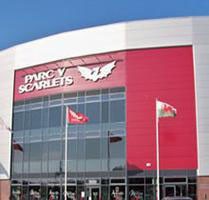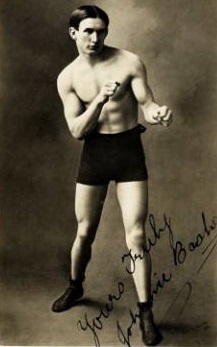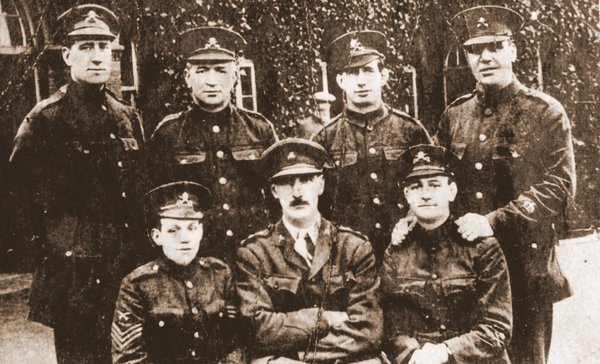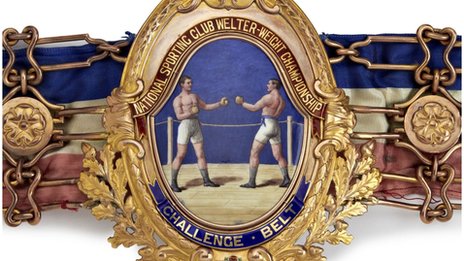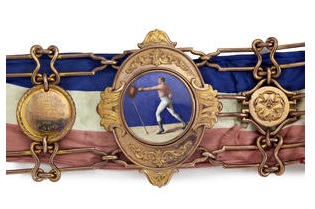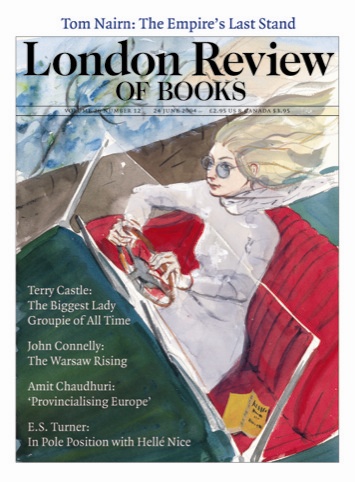On or about 21st June 1404, Owain Glyndwr held his first Parliament, at Machynlleth and at which he was Crowned Prince of Wales.
This followed a successful campaign of around four years, in which Glyndŵr had liberated most of Wales and brought an end to Anglo - Norman colonisation, with major victories in 1401 at the Battle of Hyddgen, 1402 at the 'Battle of Bryn Glas' and in 1403 at the'Battle of Bryn Owen - Stalling Down'.

On 21st June 1234, the Peace of Middle was agreed between Llywelyn ab Iorwerth (Llywelyn Fawr) and King Henry III of England.
Llywelyn ab Iorwerth was born at Dolwyddelan castle in around 1173 and by 1200, he had taken control of the kingdoms of Gwynedd and Deheubarth and began to use the title of 'Prince of the whole of North Wales'. Llywelyn then concluded a treaty with King John of England in 1201, in which John recognised Llywelyn's territorial gains in return for Llywelyn's fealty to him. Llywelyn then married King John's daughter, Joan in 1205 and when Gwenwynwyn of Powys was stripped of his lands by John, Llywelyn took advantage and claimed most of Powys. Llywelyn also fought with John against King William I of Scotland.
However in 1211, Llywelyn and John fell out, which resulted in John invading Gwynedd with an alliance of almost all the other Welsh princes. Total defeat, however, was avoided by Joan's intervention, who managed to convince her father not to take all of Llywelyn's lands. He was however restricted to the land west of the Conwy.
During 1212 and 1213, Llywelyn in alliance with the lords of Powys and Deheubarth, was able to regain much of his lost lands and in 1215 the alliance also took the castles of Carmarthen, Kidwelly, Llanstephan, Cardigan and Cilgerran. Llywelyn, as leader of the alliance, was now the ruler of the majority of Wales and in 1216 at Aberdyfi, the other princes confirmed their allegiance to Llywelyn.
In 1218, Llywelyn's possessions were confirmed by John's successor Henry III at the Treaty of Worcester and he instigated a programme of castle building such as those at Criccieth, Dolwyddelan, Castell Y Bere and Tomen Y Bala. On the whole, there remained good relations between Llywelyn and Henry III, which was confirmed in 1234 with The Peace of Middle, initially only to last for two years, it did actually extend until Llywelyn's death in 1240.


Celtic Festivals
Summer Solstice
The summer solstice is the first day of astronomical summer and the longest day of the year for people in the Northern Hemisphere. In ancient times, solstices and equinoxes were important in helping people to maintain calendars and grow crops. The solstice itself has remained a special moment of the annual cycle of the year since Neolithic times and over the centuries has been marked by festivals and celebrations.
* In Wales prehistoric sites such as at Bryn Celli Ddu on Anglesey, the open burial chamber dated to around 2000BC, is so perfectly aligned that for only 20 minutes each year, a beam of sunlight aligns exactly with the opening to the chamber.
* Mistletoe was important to the Celtic Druids as it was believed to cure all ills. On Midsummer Eve, it is reported that they would cut it with a golden scythe and catch it in a cloth before it touched the ground.
* With the coming of Christianity, people were encouraged to give up their old traditions, by their incorporation into new Christian practices. For example, the summer solstice became known as the feast of St. John, the Baptist.
* In Wales it is called Gŵyl Ifan Ganol Haf (St John's of Midsummer). Great agricultural fairs, which included dancing, merriment and the lighting of bonfires, were held at this time. Welsh tradition says that gathering Saint John's Wort on the night before the summer solstice would bring good luck and imbue it with extra healing powers.
* A sprig of mistletoe gathered on Midsummer Eve and placed under the pillow was said to bring prophetic dreams and branches from birch trees were used to decorate maypoles town squares.
.
* With the advent of non-conformist beliefs on the Welsh socio-political culture, this (among so many other similar festivals) suffered greatly, and its observance finally died out by the end of the 19th century.


On 21st June 1792, Iolo Morganwg organised the first Gorsedd of Bards at Primrose Hill, London, (photograph shows a plan of the Gorsedd Circle in Iolo Morganwg's handwriting, note that "'the Bards stand unshod and uncovered within the circle")
Iolo Morganwg, an academic originally from Llancarfan in Glamorgan, living in London, believed that Celtic Welsh culture and heritage needed to be promoted and arranged the first Gorsedd in a ceremony at Primrose Hill, London, on 21st June 1792 (supposedly based on the activities of the ancient Celtic Druidry). An outer circle of small stones was formed and a larger Gorsedd Stone placed in the centre and only the Bards, barefoot and bareheaded and identified by their green, blue or white ribboned armbands, were permitted to enter. Several further ceremonies were held in London and in 1795 Iolo returned to Glamorgan to hold his first Gorsedd in his native country. However, the authorities believed that he was encouraging revolutionary activity and it was not until 1815 that Gorseddau were able to flourish properly.
It was later discovered to a fantasy of Iolo's imagination, but the institution he established, was cherished by Welsh people, who saw it as a means of promoting a distinct Welsh culture and in 1819, the Gorsedd was formally linked with the National Eisteddfod.

The National Gorsedd of Wales, "Gorsedd Beirdd Ynys Prydain" ("The Gorsedd of Bards of the Island of Britain") is an association of individuals who have made a significant and distinguished contribution to Welsh culture and it supports Welsh literatue, music and poetry in particular. Its activity is most visible at The National Eisteddfod
* Gorsedd Beirdd Ynys Prydain was founded in 1792 by Iolo Morganwg, who also invented much of its ritual, supposedly based on the activities of the ancient Celtic Druidry.
* The Gorsedd y Beirdd made its first appearance at the Eisteddfod at the Ivy Bush Inn in Carmarthen in 1819, and its close association with the Festival has remained.
* There are three equal ranks of membership in the Welsh Gorsedd. Ovates who wear green robes, Bards who wear blue robes, and Druids who wear white robes.
* The concept of the three roles of bards, ovates and druids is thought to originate from the writings of the ancient Greek historian and geographer Strabo, the "bardoi" being the poets and singers, the "o'vateis", the specialists in the natural world and the "druidai" who studied moral philosophy.
* The head of a Gorsedd known as an Archdderwydd (Archdruid) wears a golden robe, is elected for a term of three years and is responsible for conducting the Gorsedd ceremonies during Eisteddfod week. To become an Archdruid, an individual must have won one of the Eisteddfod's three highest awards: the Crown, the Chair, or the Literature Medal. * Often a new inductee will take a pseudonym or bardic name.
* During these ceremonies, the Archdruid and the members of the Gorsedd gather on the Eisteddfod stage and when the Archdruid reveals the identity of the winning poet, the 'Corn Gwlad' (a trumpet) is played and the Gorsedd Prayer is chanted. The Archdruid then partially withdraws a sword from its sheath three times, and cries "A oes heddwch?" ("Is there peace?"), to which the assembly reply "Heddwch" ("Peace"). Then the Archdruid drinks from Horn of Plenty and is presented with a basket of 'flowers, after which a floral dance is performed
* The triple line symbol called "awen" ( /|\) representing the sun, is commonly used to represent a Gorsedd.

Cadwgan of Llandyfai was consecrated Bishop of Bangor on 21st June 1215
Cadwgan was the son of a Welsh woman and an Irish priest, famous for his excellent preaching abilities. He entered monastic life immediately he reached adulthood and was successively Abbot of Strata Florida and Whitland Abbey (from 1203) in Carmarthenshire.
He appears to have been something of a dodgy character and was removed from office at Whitland during fraud investigations into wool sales by a party from Clairvaux. However, in 1215, Cadwgan managed - probably with the help of Prince Llywelyn the Great - to gain appointment to the vacant see of Bangor before the Archbishop of Canterbury was made fully aware of the situation. He was consecrated at Staines on 21st June. His episcopacy seems to have been unremarkable, although he was a famous theologian and wrote a number of spiritual tracts and commentaries, as well as a penitential, while in office.
He was also known for his charitable works and, in 1234, imported a shipload of corn from Ireland to feed the poor of his diocese. After twenty-one years, Pope Gregory IV gave him permission to retire, as an ordinary monk, into the Abbey of Dore, in Herefordshire. He gave the monastery there all his goods, including his horses and a fine library of books. However, he does not appear to have been very popular and, towards the end of his days, the Chapter heard accusations of his neglecting the Cistercian observances, particularly breaking their silence. Probably, he had been allowed some latitude due to his previous status, thus incurring jealousy amongst his fellows. Cadwgan died in 1241 and was buried at Dore Abbey under a wooden effigy of him in full Episcopal regalia.
The Taff Vale Railway Company was created on 21st June 1836 by an Act of Parliament that also capped the speed of trains to 12 mph.
The first stretch of the line to be opened was that from Cardiff to Navigation House (later named Abercynon) on October 9th 1840, with the line extended to Merthyr on April 12th 1841. The chief engineer was Brunel and initially he used a narrow gauge, single line track, because of the narrowness of the Taff valley and trains were only able to pass at stations. The line, however, was upgraded to a double line in 1857. One of the notable features of the line is the 110-foot span, skew stone arch viaduct at Pontypridd, which is still in use today.

Born on this day 1845 in Merthyr.
Sir Samuel Walker Griffith . Principal author of the Constitution of Australia, politician and Chief Justice of the High Court of Australia.
Griffith's family migrated to Queensland when he was eight and after finishing school and university, he travelled Europe spending much of his time in Italy. On his return, he studied law and became involved in politics and as leader of the liberal party he was elected Premier of Queensland 1n 1883. He was regarded as a liberal reformer, he opposed the use of Kanaka slave labour and introduced a bill to legalise trade unions. However his government used the military to break the great shearers' strike, and he earned the nickname "Oily Sam". On his return to his legal career, he was appointed as Chief Justice of the Supreme Court of Queensland, before becoming the first Chief Justice of the High Court of Australia in 1903. Griffith died in 1920 and was commemorated by the naming of Griffith University in South East Queensland.

Born this day 1964 in Swansea.
Dean Saunders - Former Wales soccer international, capped 75 times, scoring 22 goals - making him one of the nation's highest scoring and most capped players of all time. Following his retirement from playing, he has managed of Wrexham, Doncaster Rovers and Wolverhampton Wanderers.

